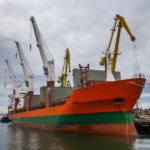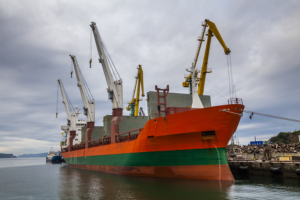Having a sustainable supply chain is the only way to adapt to the impositions that are ruling the world. After all, the way of producing and buying has changed a lot in the last years; and it doesn’t promise to slow down.
Mapping and sharing in a transparent way the relationship of your business with the environment, besides attracting new customers, create loyalty in the ones already conquered. In the face of so many natural disasters, protecting the environment is both the public interest and management’s responsibility.
The new era of the supply chain presents itself within these new molds and with a frighteningly large demand. That’s why the need to digitally revolutionize the logistics process has imposed itself so widely. However, just doing it is not enough, the example must be seen, and for that, the visibility and integration of the supply chain must be in full swing.
How does the world charge for changes?
The COVID-19 pandemic has both increased climate ambition and puts attention to the complexities of global supply networks. Even when corporations create “zero-emissions” finished goods, they risk the validity of the energy transition by employing manufacturing techniques that are far from clean. Against the backdrop of worldwide calls to “electrify everything;” the European Union (EU) has launched an initiative to solve one of the drivers of economic decarbonization: the battery.
The EU’s upcoming Batteries Regulation shows how the most essential electrification technology may establish worldwide norms for supply chain sustainability, despite a manufacturing process marked by high carbon intensity, environmental concerns, and, in some cases, human rights violations. The Regulation, which is currently being debated in the European Parliament, proposes progressive reductions in the carbon footprint of the battery value chain, mandatory minimum levels of recycled content and recoverability for key raw materials, and additional battery performance, durability, safety, due diligence, and labeling requirements.
The world’s two largest economies, China and the United States; are also imposing review plans and new policies to ensure a sustainable supply chain. The Biden administration has made the 100 days supply chain review and several other decisions aimed at achieving sustainability. On the other hand, the Xi Jinping government has been working on robust transformations since at least 2006.
There is a lot to do yet and the major natural threats do not seem to be getting any less dangerous, such as global warming, melting glaciers, flooding cities, and others. That is why the changes and impositions will only increase from now on.
One connection to achieving the sustainable supply chain
To respond adequately to all the needs, your data must talk in the same systemic language and be secure. Our operating system integrates your entire supply chain and makes the connection you need to prove a sustainable supply chain. Enter the new era of the supply chain; have full and real-time visibility of your logistics processes, be a Grydd partner.


















